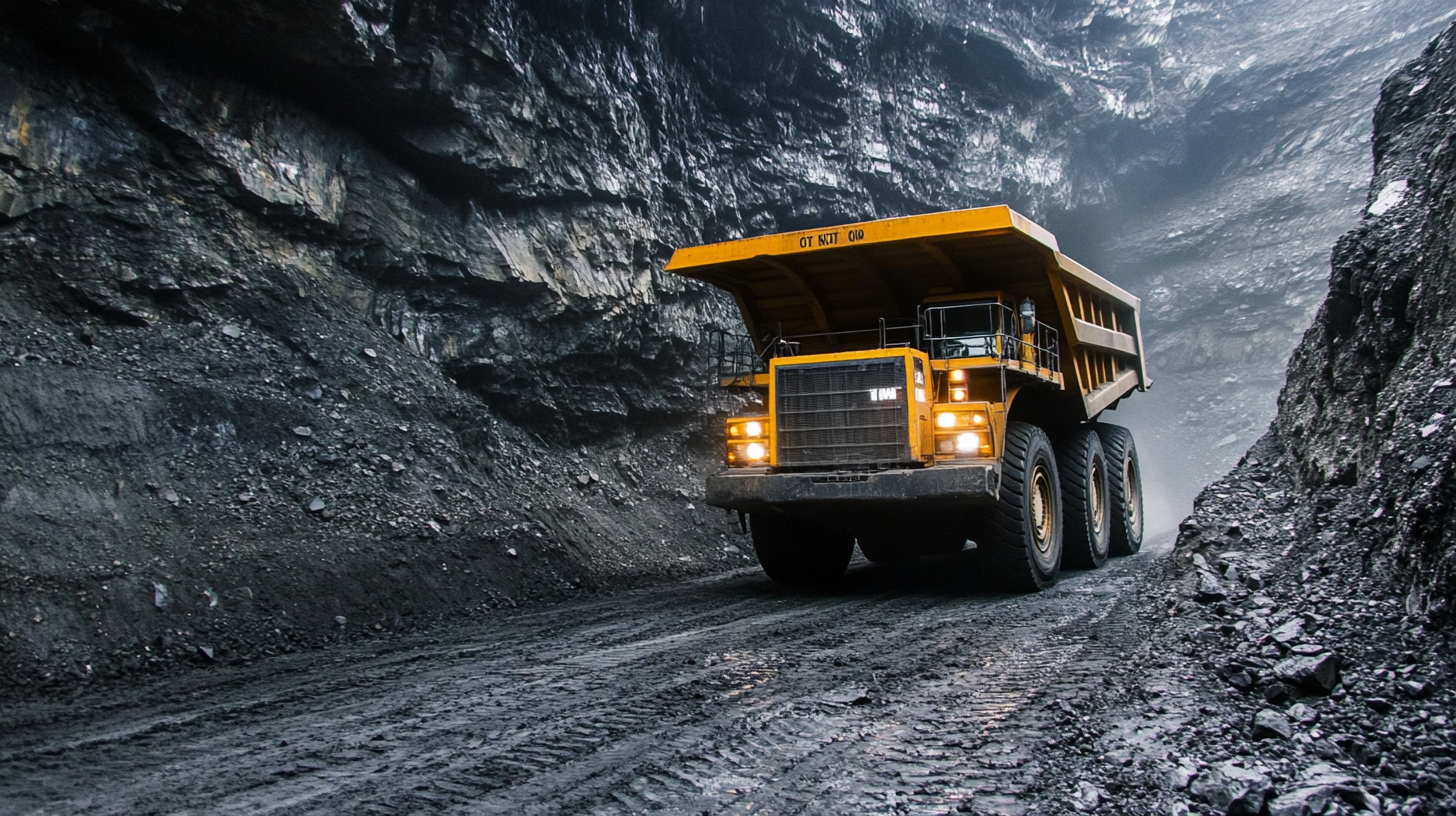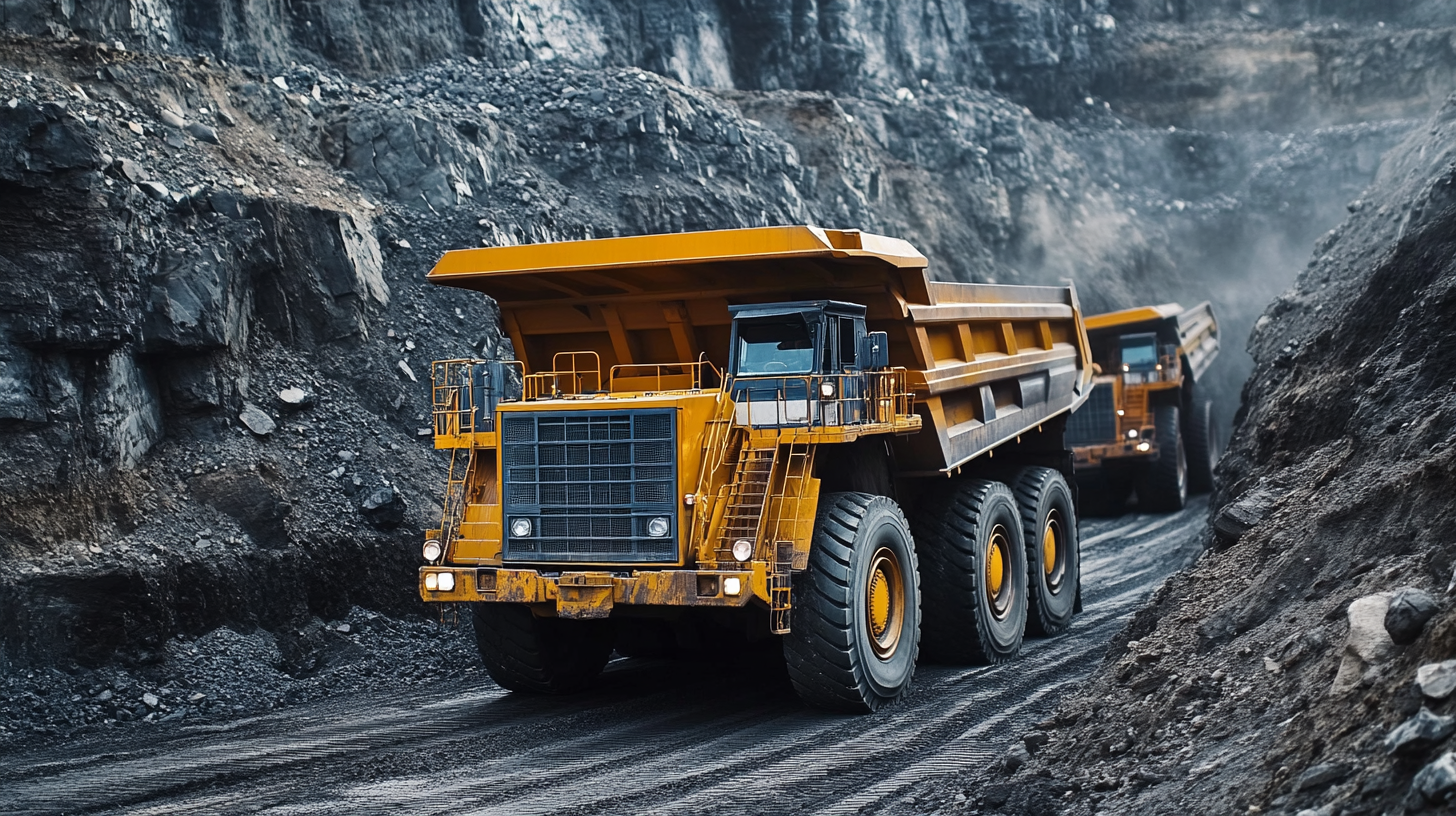The coal mining industry faces a dynamic landscape marked by the need for enhanced operational efficiency and sustainability. As global coal consumption is projected to remain stable with an estimated demand of 7.3 billion metric tons by 2025, the role of high-efficiency haul trucks has never been more critical. These vehicles are not just pivotal for transportation within mining operations but are also integral in reducing carbon footprints and operational costs. Research indicates that coal mine haul trucks can enhance productivity by 20-30% when equipped with advanced technologies such as automated systems and real-time data analytics. The Chinese manufacturing sector, recognized for its consistency and reliability, is emerging as a key player in producing these high-performance haul trucks, reinforcing the phrase "Globally Trusted Chinese Manufacturing, Quality is Always Consistent." This blog aims to explore the future prospects of coal mine haul trucks and their transformative impact on the coal mining industry.

 High-efficiency haul trucks are becoming increasingly critical in the coal mining industry, addressing the dual challenges of operational cost management and environmental sustainability. According to a report by the International Energy Agency, coal mining operations can account for up to 30% of total operational emissions. By implementing high-efficiency haul trucks, mines can significantly reduce fuel consumption, thereby lowering greenhouse gas emissions and operational costs. Data suggests that these advanced trucks can achieve up to 20% greater fuel efficiency compared to conventional models, translating to substantial savings for mining companies.
High-efficiency haul trucks are becoming increasingly critical in the coal mining industry, addressing the dual challenges of operational cost management and environmental sustainability. According to a report by the International Energy Agency, coal mining operations can account for up to 30% of total operational emissions. By implementing high-efficiency haul trucks, mines can significantly reduce fuel consumption, thereby lowering greenhouse gas emissions and operational costs. Data suggests that these advanced trucks can achieve up to 20% greater fuel efficiency compared to conventional models, translating to substantial savings for mining companies.
Additionally, the adoption of high-efficiency haul trucks contributes to enhanced productivity. A study from Mining Weekly indicates that optimizing truck performance can lead to a 15% increase in the amount of coal transported per shift. This increase not only improves profitability but also allows companies to meet the rising global demand for coal, as evidenced by projections from the World Coal Association that expect coal use to remain stable through 2040 due to its role in energy production. By investing in high-efficiency haul trucks, coal mining operations are poised to improve their economic viability while also adhering to stricter environmental standards.
The coal mining industry is experiencing a significant transformation driven by advancements in haul truck technology, which directly impacts productivity. The introduction of electric and hydrogen-powered trucks is reshaping operational metrics, with new analyses indicating that these technologies can offer substantial cost savings. For instance, battery-electric trucks designed for high payloads may reduce the total cost of ownership by millions, making them an attractive option for mining companies aiming to enhance their efficiency while reducing carbon emissions.
Moreover, digital transformation is amplifying the advantages of these new technologies. Automation and smart systems are making it possible for haul trucks to operate with greater precision and safety, minimizing downtime and maximizing output. This digital shift not only streamlines operations but also aligns with environmental goals, as modern trucks are designed to lower emissions and improve air quality.
With an increasing focus on sustainability, the coal mining industry is poised to leverage these advancements to meet both productivity demands and consumer expectations for responsible resource extraction.
The coal mining industry is undergoing significant transformations with the advent of high-efficiency haul trucks. A comparative analysis between traditional and high-efficiency haul trucks reveals that the latter not only enhances operational productivity but also reduces carbon emissions significantly. Traditional haul trucks, characterized by their higher fuel consumption and maintenance costs, tend to perform slower and require more frequent refueling. In contrast, high-efficiency models are designed with advanced technology that optimizes fuel usage, enabling longer operational hours and reduced downtime.
Moreover, high-efficiency haul trucks incorporate features like regenerative braking and lightweight materials, further enhancing their performance. These innovations contribute to a noticeable decrease in operational costs over time, making them a more sustainable choice for coal mining companies. As the industry becomes increasingly conscious of environmental impacts, the shift towards high-efficiency haul trucks is not merely an operational upgrade but a strategic move towards more sustainable practices in coal extraction and transportation. This evolution highlights a critical juncture in how coal mining companies will approach their logistics and environmental responsibilities in the future.
The transition to high-efficiency haul trucks in the coal mining industry presents significant environmental benefits that align with global decarbonization goals. As coal mining continues to face increasing pressure to reduce greenhouse gas emissions, the adoption of advanced diesel-electric trucks can result in substantial emissions reductions. A recent study highlighted that heavy-duty diesel truck emissions, particularly PM2.5, have a detrimental impact on air quality and human health. By shifting to more efficient truck models, operators can significantly lower these harmful emissions, contributing to improved air quality and public health.

Moreover, the mining sector is witnessing advancements in truck technology that enhance both productivity and efficiency. For instance, the market for underground mining equipment is poised to grow at a CAGR of 5.1%, reaching an estimated size of USD 43.19 billion by 2030. This growth is driven by innovations like electric drivetrains that not only increase operational efficiency but also decrease the reliance on conventional fossil fuels. The integration of energy-efficient technologies will not only comply with stringent emission regulations but also position the coal mining industry as a leader in sustainable mining practices, ultimately benefiting both the environment and local communities.
The coal mining industry is on the brink of a significant transformation, primarily driven by automation and the integration of smart technologies in haul trucks. As trends like Mining 4.0 and Mining 5.0 emerge, we observe a notable shift toward intelligent systems which enhance operational efficiency and safety. Reports indicate that by 2029, the mining truck market in China alone is expected to reach USD 4.23 billion, with a compound annual growth rate (CAGR) of 4.80%. This highlights a growing investment in autonomous technologies that streamline haulage processes and minimize costs.
Moreover, the adoption of robotics and the Internet of Things (IoT) is becoming increasingly important in creating smart mining operations. For instance, autonomous hauling systems are not just mechanizing labor but are also developing a framework for safer mines. The Syama mine has set a benchmark as the world’s first fully automated mine, showcasing the capabilities of unmanned technology. As the industry continues to embrace these advancements, the focus will shift even more towards the synergy of automation, leading to enhanced productivity while reducing human exposure to hazardous conditions.
| Feature | Description | Benefits | Future Trends |
|---|---|---|---|
| Automation | Use of automated systems for haulage operations. | Increased operational efficiency and reduced labor costs. | Widespread adoption of fully autonomous haul trucks. |
| Telematics | Real-time data collection and analysis from haul trucks. | Enhanced decision-making and predictive maintenance. | Integration with AI for advanced analytics. |
| Smart Features | Implementation of features like GPS, collision avoidance. | Increased safety and more effective fleet management. | Development of next-gen smart trucks with AI capabilities. |
| Energy Efficiency | Adoption of hybrid and electric powertrains. | Reduced carbon footprint and operational costs. | Shift towards fully electric haul trucks. |
| Data Security | Protection of sensitive operational and telematics data. | Safeguarding against cyber threats. | Implementation of advanced encryption mechanisms. |